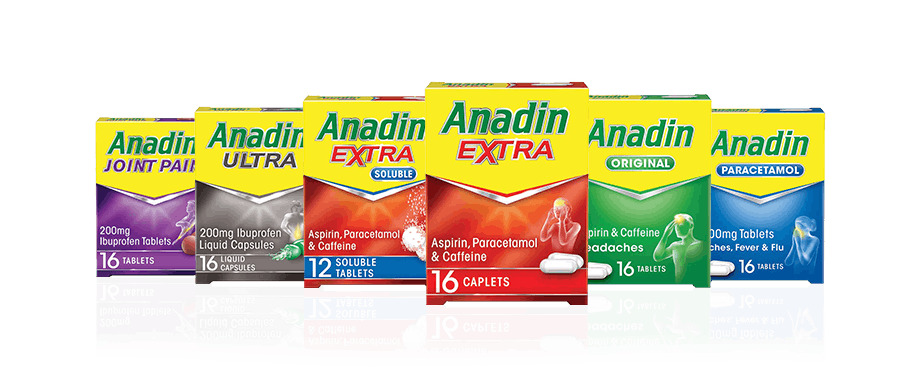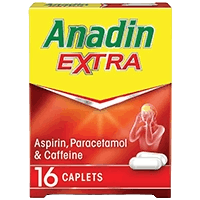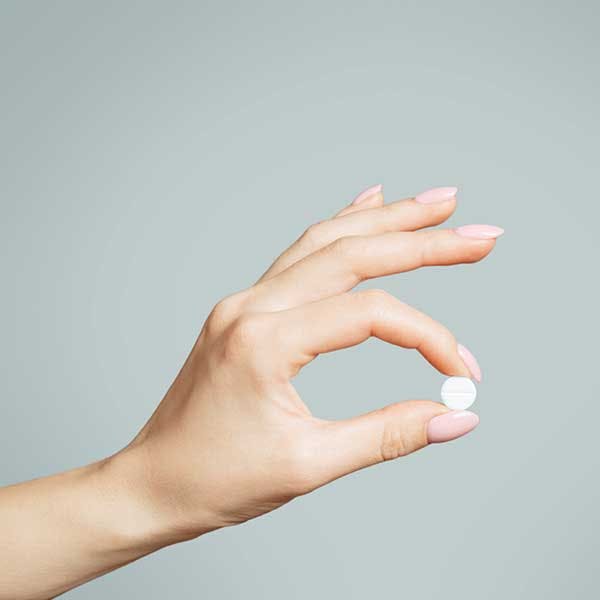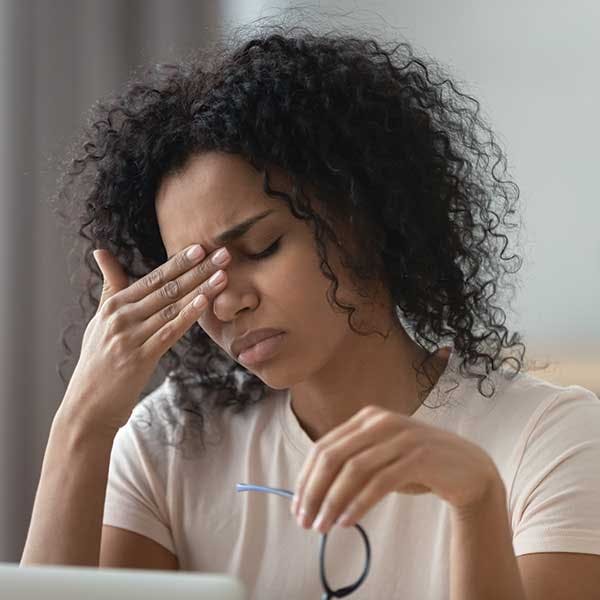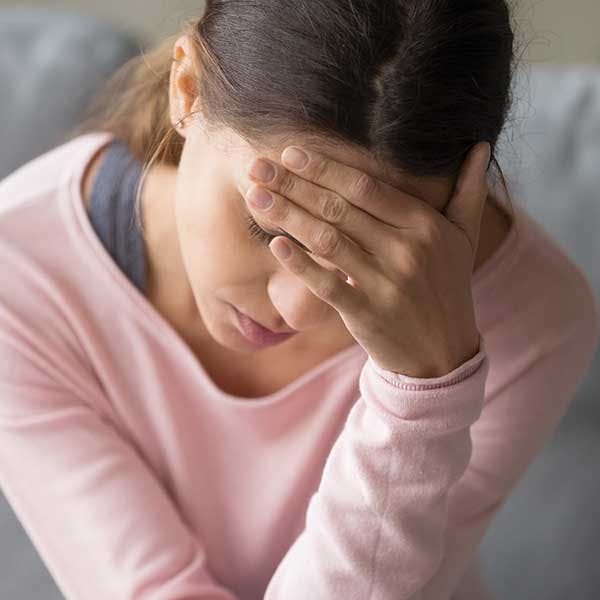Aspirin + Caffeine
Aspirin + Paracetamol + Caffeine
Anadin Extra Tablets Anadin Extra Soluble Tablets
Paracetamol
What is period pain?
You’ve probably heard periods being referred to as ‘that time of the month’. The time of the month that most women dread, as it can lead to painful cramps, mood swings and bloating.
Period pain, also known as dysmenorrhoea is very common amongst women of all ages and is a normal part of a menstrual cycle. Around 80% of women experience period pain at some point throughout their lives. It’s often felt as intense muscle cramps in your lower abdomen and can sometimes spread to the back and thighs.
Period pain can vary in intensity, some women experience zero pain throughout their periods, whereas other women experience unbearable severe period pain, which impacts their day. The pain will usually start at the beginning of each period; however, some women experience pain before their periods start and it will usually last between 48-72 hours.
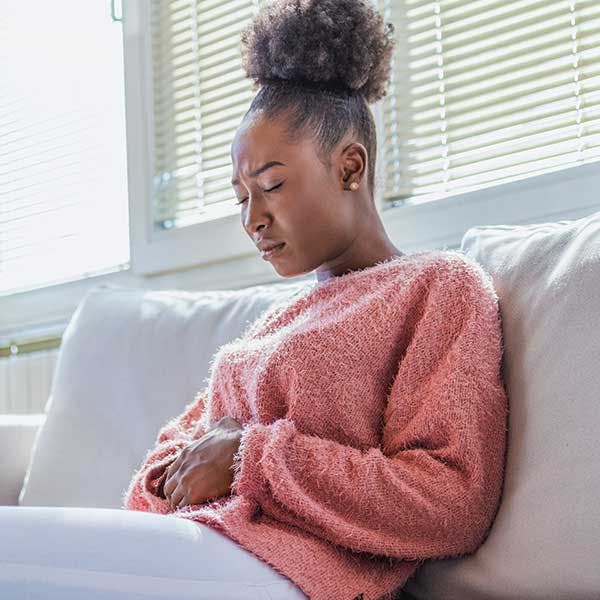
Types of period pain in the menstrual cycle
A menstrual cycle is the time from the first day of a woman’s period to the day before her next period and is controlled by hormones. In each cycle, rising levels of oestrogen cause the ovary to develop and release an egg, causing the lining of the womb to thicken. This is called ovulation.
During the second half of the cycle, progestogen helps the womb to prepare for implantation of a developing embryo. Afterwards, the egg travels down the fallopian tube and if pregnancy doesn’t occur, the egg gets reabsorbed into the body. Hormone levels start to decrease, and the lining of the womb comes away and leaves the body as a period, otherwise known as a menstrual flow.
There are two types of period pain you should be aware of:
- Primary Dysmenorrhoea. This is common amongst teenage girls and young women. These period pains are caused by the uterus contracting to shed its lining. The pain occurs in the lower abdomen and is usually a mild discomfort for most women.
- Secondary Dysmenorrhoea. This pain can be caused by an underlying medical condition e.g. fibroids or endometriosis. The pain can often be experienced at other times in your menstrual cycle, days before your period starts as well as when you are on your period.
This type of period pain can get worse with age and start years after your periods have started, quite often in your 30s or 40s. If you experience severe period pain that stops you from doing day-to-day things, or that worries you at all, you should speak to your doctor.
Period Pain Causes
What are menstrual cramps and what causes them?
Menstrual cramps are caused when the muscular wall of the womb contracts. As the lining of the womb starts to shed, the wall of the womb starts to contract more vigorously. During these contractions, it compresses the blood vessels lining your womb, which temporarily cuts off the blood supply and oxygen supply to your womb. Without oxygen, the tissues in your womb release chemicals that trigger pain.
However, menstrual cramps can be caused by other health conditions, which include:
- Endometriosis. The tissue that lines your uterus becomes implanted outside your uterus, most commonly on your fallopian tubes, ovaries or the tissue lining your pelvis.
- Uterine Fibroids. These noncancerous growths in the wall of the uterus can cause pain.
- Pelvic inflammatory disease. This infection of the female reproductive organs is usually caused by sexually transmitted bacteria.
- Adenomyosis. The tissue that lines your uterus begins to grow into the muscular walls of the uterus.
- Cervical stenosis. In some women, the opening of the cervix is small enough to impede menstrual flow, causing a painful increase of pressure within the uterus
Period Pain Symptoms
Period pain can vary for each individual, the pain can start 1 to 3 days before your period, peaks 24 hours after the onset of your period and subsides in 2 to 3 days. Some common period pain symptoms are:
- Intense cramping pain in your lower abdomen.
- A continuous ache in your lower abdomen.
- Pain that spreads to your lower back and things.
Some women may also have:
- Nausea
- Dizziness
- Headache
- Diarrhoea
Period Pain Relief
How to Deal with Period Pain and Cramps?
Over the counter medication such as Anadin Ultra which contain ibuprofen, or Anadin Extra which has a triple action formula – aspirin, paracetamol and caffeine, can be an effective period pain reliever. Start taking the painkiller when you start to experience pain at the beginning of your period. The lowest effective dose should be used for the shortest duration necessary to relieve the symptoms. If symptoms persist or worsen, a healthcare professional should be consulted.
If Anadin Ultra is needed for longer than 3 days in children and adolescents (age of 12-18 years), or 10 days in adults over 18 years, a healthcare professional should be consulted.
There are various types of contraception, which contain hormones which contains hormones that help prevent ovulation period cramps. This type of contraception can come in several forms including injections, skin patches, tablets, an implant placed underneath the arm or an intrauterine device (IUD). Always speak to your GP or health provider regarding any prescription medication or contraception.
There are various home remedies you can try for period pain relief. These include:
- Hot Water Bottles. Placing a hot water bottle or heat pack onto your lower abdomen to reduce menstrual cramps.
- Exercise. Regular physical activity, including walking, cycling and swimming can help reduce pain.
- Reduce Stress. Psychological stress may increase your risk of period pain so relaxion techniques such as yoga and pilates may help to reduce stress.
You should seek medical advice if your period pain is prolonged and severe.


